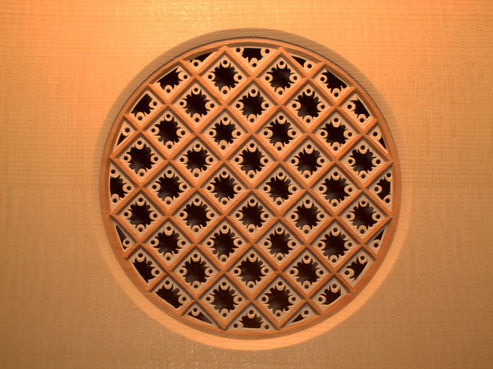Baroque guitars
There is understandable confusion between the guitar and the vihuela. They look very similar and coexisted side-by-side during the 16th century. The Spanish vihuelistas looked down at the guitar as an uncouth instrument, limited to peasant strumming, whereas they developed a very sophisticated and highly contrapuntal style. However, the guitar persisted, grew in popularity, and witnessed the disappearance of the vihuela by the early 17th century.
In fact, the baroque guitar continued in popularity, eventually displacing the lute. Louis XIV was said to play the guitar well, and this forced the fine lutenists of the day to add it to their resumés. Robert de Viseé composed for and played lute, theorbo and guitar; his guitar music, some of it arrangements of earlier lute music, demonstrates a very subtle art.
The baroque guitar is pitched a third below the lute and vihuela, and therefore has a slightly longer string length, about the same as the modern guitar. In fact, it is tuned "like" the modern guitar: ADGBE. However, it represents an interesting challenge on how to string it.
I currently build two versions of a baroque guitar:
-
Giorgio Sellas 1624 720mm
-
Own Design After A. Voboam, Paris 1680 650mm (Pictured)






